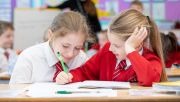Writing
At Springfield Primary School, we believe that every child is a writer. We are passionate about developing every child’s knowledge, motivation and confidence in their writing. We have chosen HFL Education’s ESSENTIALWRITING as the basis of our writing curriculum for years R-6. This is an ambitious and progressive writing scheme which provides our children with opportunities and tools to write for a range of specific purposes and authentic audiences. As a result, our children feel inspired and ready to write high-quality outcomes within the classroom but also have the knowledge, strategies and confidence to choose to write in their own lives. We follow a two-year rolling programme to ensure children access complete coverage of the curriculum without unnecessary repetition. Medium term plans include adaptations to support with delivering a well-pitched curriculum within a mixed age class.
Each year group has 13-16 teaching units, all of which use diverse and high-quality literature as good examples of writing craft and to help to motivate or inspire children to write.
ESSENTIALWRITING is fully aligned with the National Curriculum for English including writing composition, vocabulary, grammar & punctuation for each year group. Each writing unit is progressively structured and centred around the different writing purposes: to entertain; to inform; to persuade; to discuss. The writing purposes are also progressively sequenced across the school
Alongside ESSENTIALWRITING, at Springfield Primary School, we have adopted CUSP spelling programme as the basis of our spelling curriculum. ESSENTIALWRITING supports our children to apply this learning in context and build their spelling confidence. Writing models reflect age-appropriate spelling objectives and children are taught how to monitor the accuracy of their writing. Handwriting is also taught. We have adopted Nelson Handwriting Scheme to ensure that every child gains sufficient fluency for writing, with knowledge of accurate letter formation and how to join letters so that they can meet the National Curriculum expectations for each key stage.
Reception
The ESSENTIALWRITING programme for 4–5-year-olds is closely linked to ESSENTIALWRITING for 3-4-year-olds as children move onward through their writing journeys. The three strands I am a communicator, I am a mark-maker, and I am a writer continue to be woven tightly together and not taught in a linear way or in isolation. As well as the Statutory Framework for the EYFS, we have referenced learning statements from Development Matters and the Reading Framework so that we can be sure that the skills children learn and practise in their Reception year build upon what has gone before and prepare them for what follows in Y1. The programme is built around bookmaking to support children with understanding that writing is a multi-sensory, fun and joyous experience for all of us, that it is purposeful, and that everyone can be a writer. Short (5-10 minute carpet sessions) are introduced where the YR practitioner teaches and models one thing within their own book and invites the children to do the same thing within their bookmaking during the school day. When practitioners are supporting children to do this, they should be making their own book at the same time.
Year 1 and 2
In key stage one (Years 1/2), the children are always encouraged to write for an authentic audience and are introduced to the concept of writing to entertain and to inform their readers. Alongside their growing knowledge of how sounds are represented in writing (grapheme-phoneme correspondence, or GPCs), the children learn how to use this knowledge to write a wider range of vocabulary to support their own compositions. For children in Year 1, simple sentence structure is emphasised, along with use of spaces between words, capital letters and full stops, to help the reader know where one idea ends and another begins. For children in Year 2, they are taught how to join their ideas to create greater variety and interest for the reader. The children will also start to extend the range of punctuation applied by using question marks and exclamation marks in their writing. Children in Year 2 are introduced to using a comma to separate items in a list and apostrophes to show where letters are missing (contraction) or singular possession. A range of wider vocabulary is taught and encouraged within the children’s writing, to support more detailed description, along with the use of adjectives and adverbs to add detail to nouns and verbs. They will become familiar with a range of genres, such as narratives, recipes, letters and explanations, and enjoy playing with language whilst writing their own poetry.
In key stage one, the stages of the writing process are given dedicated teaching time to enable all children to behave as writers. They learn about these vital stages of writing and are given time to collect their ideas, plan and compose their writing orally before writing. They are given regular opportunities to share their writing by reading and rereading it aloud. Children regularly discuss what they have written with their teacher and their peers to ensure their meaning is clear. They are taught to proof-read to make corrections in spelling, grammar and punctuation so that their readers can follow their writing with clarity. Vitally, within all writing units, the children are given time to publish their writing to share it and celebrate their success with their intended audience.
Year 3 and 4
In lower key stage two (Years 3/4), the children consolidate their understanding of writing to entertain and to inform. For children in Year 3, they will be introduced to writing to persuade for the first time. In doing so, they will develop a keener awareness of the reader, by considering how to move and convince their audience to act and/or change their mind. They will encounter new genres, such as personal narratives (memoirs), fables, persuasive speeches and other sub-genres of poetry (such as calligrams and kennings), and revise their genre knowledge of instructions, letters and non-chronological reports. They will revisit learning from key stage one to ensure that they are familiar with simple sentence structure and build upon this by using a greater range of conjunctions to join their ideas in writing. Accurate punctuation of dialogue is introduced in Year 3/4, along with the use of prepositions and adverbs to tell the reader when, where and how things happened. The children will also learn how to structure their writing, by including paragraphs and/or headings and subheadings to support the reader to navigate the writing more effectively. Children in Year 4 are also taught about a greater variety of ways to begin sentences, such as with a fronted adverbial to link back to a previous sentence or paragraph and/or to move the writing on for the reader. A greater range and/or usage of punctuation is taught to children in Year 4, such as the use of a comma to separate groups of words or phrases within a sentence and the use of an apostrophe to signify plural possession.
In lower key stage two, the children continue to discuss and record their ideas for writing and ‘read as writers’ to study writerly craft and apply similar techniques to their own writing. Oral rehearsal for writing is embedded throughout the writing teaching sequence and the children build a varied and rich vocabulary and increasing range of sentence structures to use within their compositions. Dedicated time is provided to teach the children how to evaluate and edit their writing, thinking carefully about their language choices and the intended effect on the reader. Proof-reading strategies are used to check for spelling and punctuation errors to ensure that their final versions are ready to be shared with their audience.
Year 5 and 6
In upper key stage two (Year 5/6), the children are introduced to writing to discuss for the first time. They will also spend time writing to entertain, inform and persuade, and enjoy building upon their knowledge of these writing purposes, selecting from a wider range of sophisticated language choices based on their intended effect on the reader. Children in Year 5/6 will be encouraged to continually review and refine their writing, based on their understanding of how to use and manipulate grammar and vocabulary to achieve their desired effect. A wider range of punctuation is introduced in order to achieve this, including the use of brackets, dashes and commas for parenthesis, as well as colons to introduce a list or set up a dramatic surprise or pause for the reader. They are encouraged to focus on cohesion (making sure that the ideas within the writing link and flow) within and across paragraphs. Children in Year 6 will be encouraged to experiment more widely with their sentence structure, according to the needs of their reader, and be introduced to more sophisticated grammatical choices, such as the passive voice and subjunctive form. The range of formality required for the audience will also become a significant element of the children’s decision-making process. Along with the range of punctuation already taught across the primary phase, children in Year 6 will practise how to use semi-colons, colons and dashes to mark the boundaries between independent clauses. In order to ensure that the children can be independent writers and showcase their talents for writing, they are provided with time and choice to support their selection of subject matter within their compositions and apply their learning within extended written outcomes.
In upper key stage two, a keen focus on the purpose and audience for their writing ensures that the children are acutely aware of an appropriate selection of vocabulary and grammar, with conscious control of sentence structure. The children have time to study the writerly craft of a range of authors, noting and developing their own ideas to develop independence in writing. They understand how their language choices can be used to change and enhance meaning for their intended audience. Children are successful at evaluating and editing their writing and can propose changes to their own and others’ writing, based on its effectiveness and the needs of the reader. They can proof-read for spelling and punctuation errors to ensure that their writing is ready for sharing with their chosen audience. All writing is shared and celebrated, with feedback sought from their readers to recognise how they have been successful writers and what they could do to improve even further.


